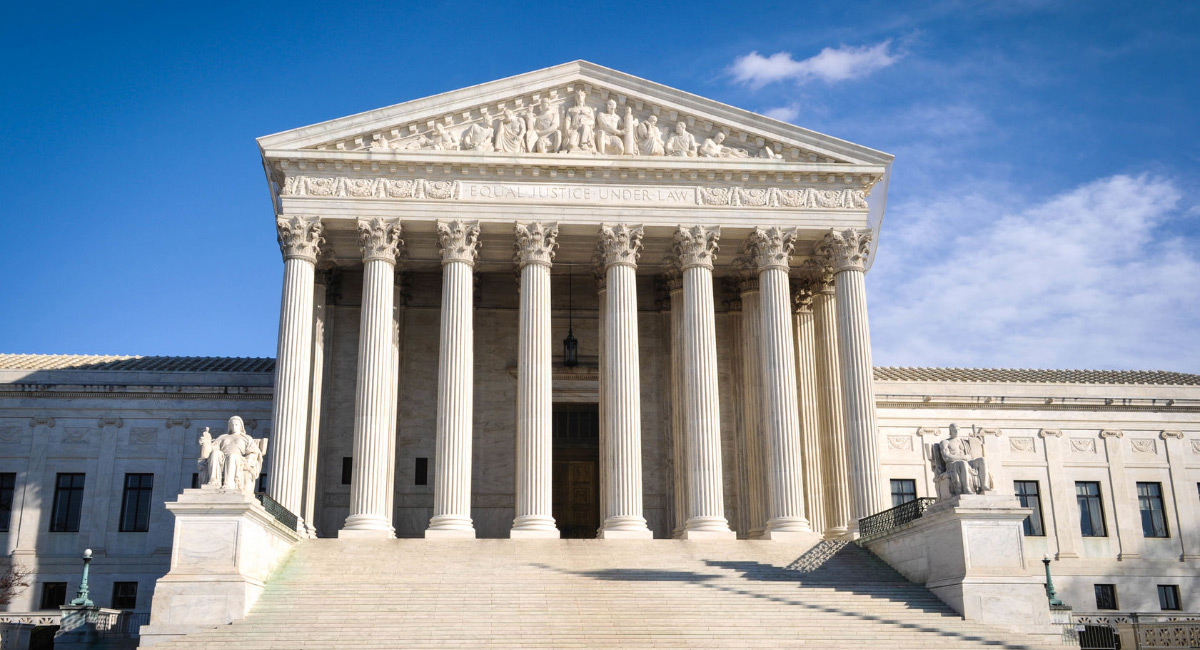For all the claims about President Donald Trump’s dangerous erosion of institutional norms, it is prominent Democrats who are ramping up their threats to pack the Supreme Court unless it starts producing different outcomes on pet issues.
Rule differently on gun control or face restructuring, several Democratic senators warned in a brief filed August 12. Sens. Sheldon Whitehouse (D-RI), Richard Blumenthal (D-CT), Mazie Hirono (D-HI), Richard Durbin (D-IL), and Kirsten Gillibrand (D-NY), issued the threat in response to the court’s consideration of the constitutionality of a New York City law strictly limiting the transport of guns by their law-abiding owners.
“The Supreme Court is not well. And the people know it. Perhaps the Court can heal itself before the public demands it be ‘restructured in order to reduce the influence of politics,’” the liberal senators wrote, quoting a Quinnipiac University poll showing that 69 percent of Democrats support court packing. The message from the Democratic senators was not subtle: That’s a nice court you have there. It would be a shame if something happened to it.
Contrary to what the senators are implying, the issue isn’t that the public at large is frustrated with the court. The issue is Democrats. Another recent poll shows that, while 62 percent of Americans have a favorable view of the Supreme Court, that percentage drops to 49 percent for Democrats, according to a recent Pew Research Center survey—the lowest percentage in decades.
Democratic politicians appear to be letting these polls dictate their policy proposals. South Bend Mayor Pete Buttigieg proposed limiting justices’ lifetime terms on the bench, while several other Democratic candidates for the 2020 presidential nomination have already spoken in favor of adding justices to the court.
As the progressive magazine Mother Jones put it: “Court-Packing Went from a Fringe Idea to a Serious Democratic Proposal.”
It’s not the first time Democratic politicians have tried to regain control of the Court by court packing. The Constitution doesn’t fix the number of justices on the court. It ranged from five to ten in the early years of the republic before being codified at nine in the Judiciary Act of 1869.
President Franklin Roosevelt, frustrated that the court had declared key provisions of his New Deal unconstitutional, proposed the Judicial Procedures Reform Bill in 1937. It would have allowed him to appoint as many as six additional justices. Even the Democrats who controlled Congress and his own Vice President opposed the plan.
But while Roosevelt’s plan to increase the number of justices failed, ultimately the pressure Roosevelt brought to bear achieved the desired result. Congress passed a bill that allowed justices who retired to receive full, rather than one-half, pensions. Four justices stepped down within the next four years and another two died, giving him six of the eight justices he eventually appointed. Another justice, Owen Robert, began voting to uphold Roosevelt’s agenda in what has been dubbed the famous “switch in time that saved nine,” on the assumption that his conversion was an attempt to stave off the president’s attempt to reconfigure the court.
Democrat threats to pack the court may be another attempt to threaten justices into changing their votes. Unfortunately, the tactic occasionally works. In 2012, the initial vote of the court regarding President Obama’s signature legislative accomplishment, the Affordable Care Act, was to strike down the law for violating the Commerce Clause. The media, senators and even President Obama began previewing arguments they would use if the court so ruled, calling the court partisan, activist, and illegitimate.
Chief Justice Roberts, worried about the blowback on the court, negotiated a deal with Justices Kagan and Breyer. They voted to overturn the law’s expansion of Medicaid in exchange for him voting to uphold the individual mandate as a tax. Both inside and outside the court, the view was that the chief justice had changed his legal position not on principle but due to public pressure.
However, the Court’s true legitimacy derives from its freedom to make decisions in accordance with law, not in its reaching decisions that will win favor with powerful politicians or media elite. A justice who allows the president or other politicians to change his or her vote does not show independence.
Justice Ruth Bader Ginsburg surprised some recently when she strongly decried court packing for political gain in an interview with NPR’s Nina Totenberg. Noting that the Constitution doesn’t require nine justices, she said it was a bad idea when FDR proposed it, and it’s a bad idea now.
“You mentioned before the court appearing partisan. Well if anything would make the court appear partisan, it would be that. One side saying when we’re in power, we’re going to enlarge the number of judges so we will have more people who will vote the way we want them to. So, I’m not at all in favor of that solution to what I see as a temporary situation,” she said.
The best solution for depoliticizing the Supreme Court is for it to have a smaller role in America’s social, economic, and political life. The high court should determine whether legislation is Constitutional. It should not correct, rewrite, update, or amend statutes, much less tinker with the Constitution itself.
A less political Supreme Court is more probable when Congress legislates clearly and utilizes the Constitution’s amendment process. Much of the temptation for courts to overreach into the political arena arises from the perception that change through the proper channels is not feasible. Democratic senators demanding the Supreme Court take on an activist role is really a declaration of their own incompetence as legislators.
Over the last 30 years, and at several critical junctures, nominations and advise and consent responsibilities have become increasingly politicized. As always, the Constitution’s independent and limited judiciary remains preferable to a hyper political court that is legislating from the bench and subject to the same base political pressures as members of Congress pandering for votes. Similarly, as voters we need to take our responsibility as guardians of the Constitution seriously and elect presidents and senators who demonstrate integrity in dealing with the court.








